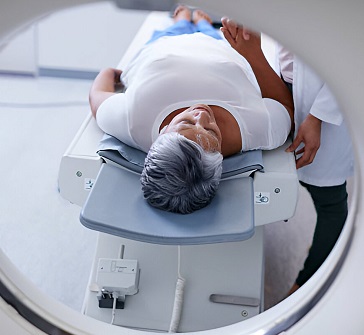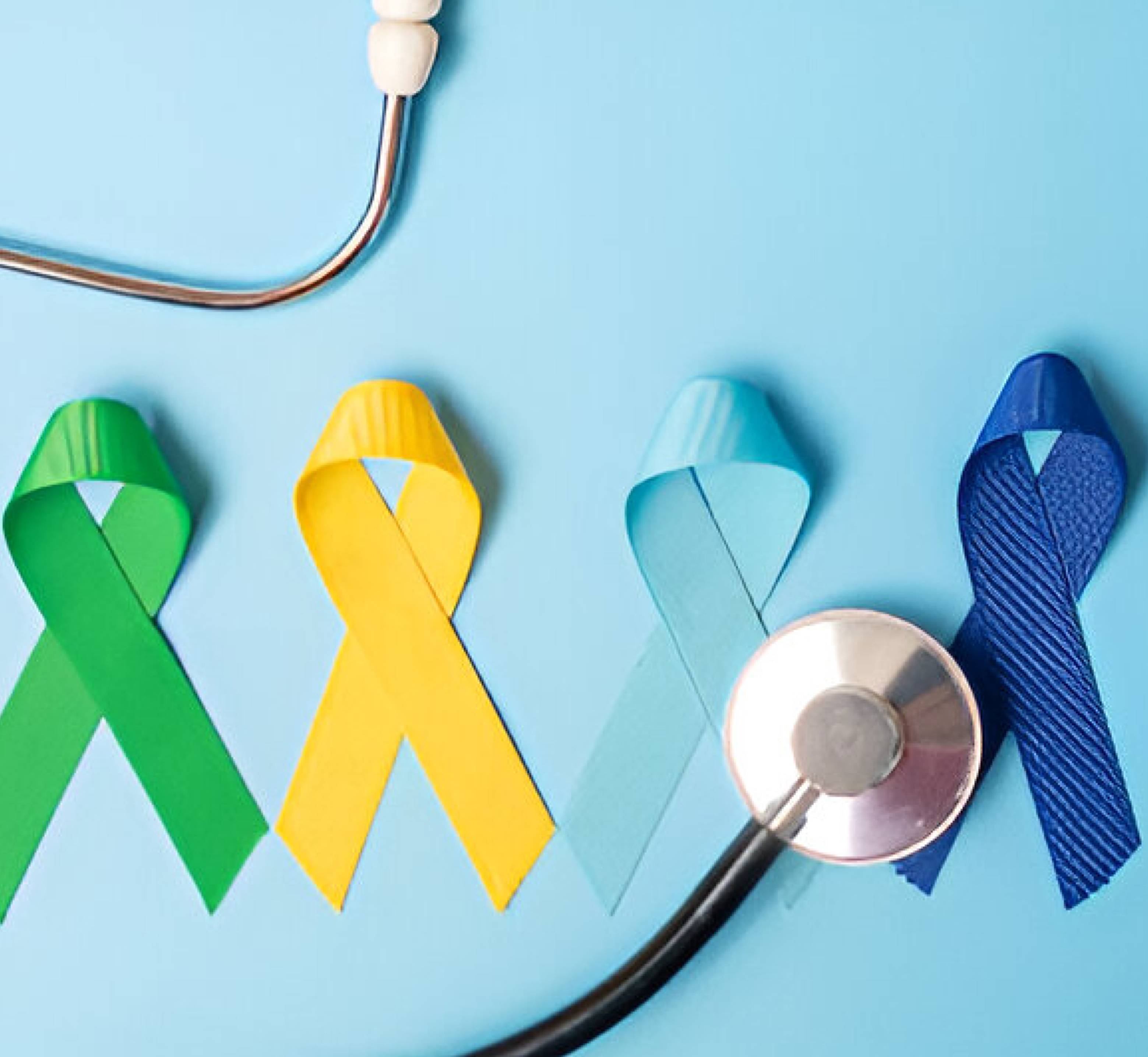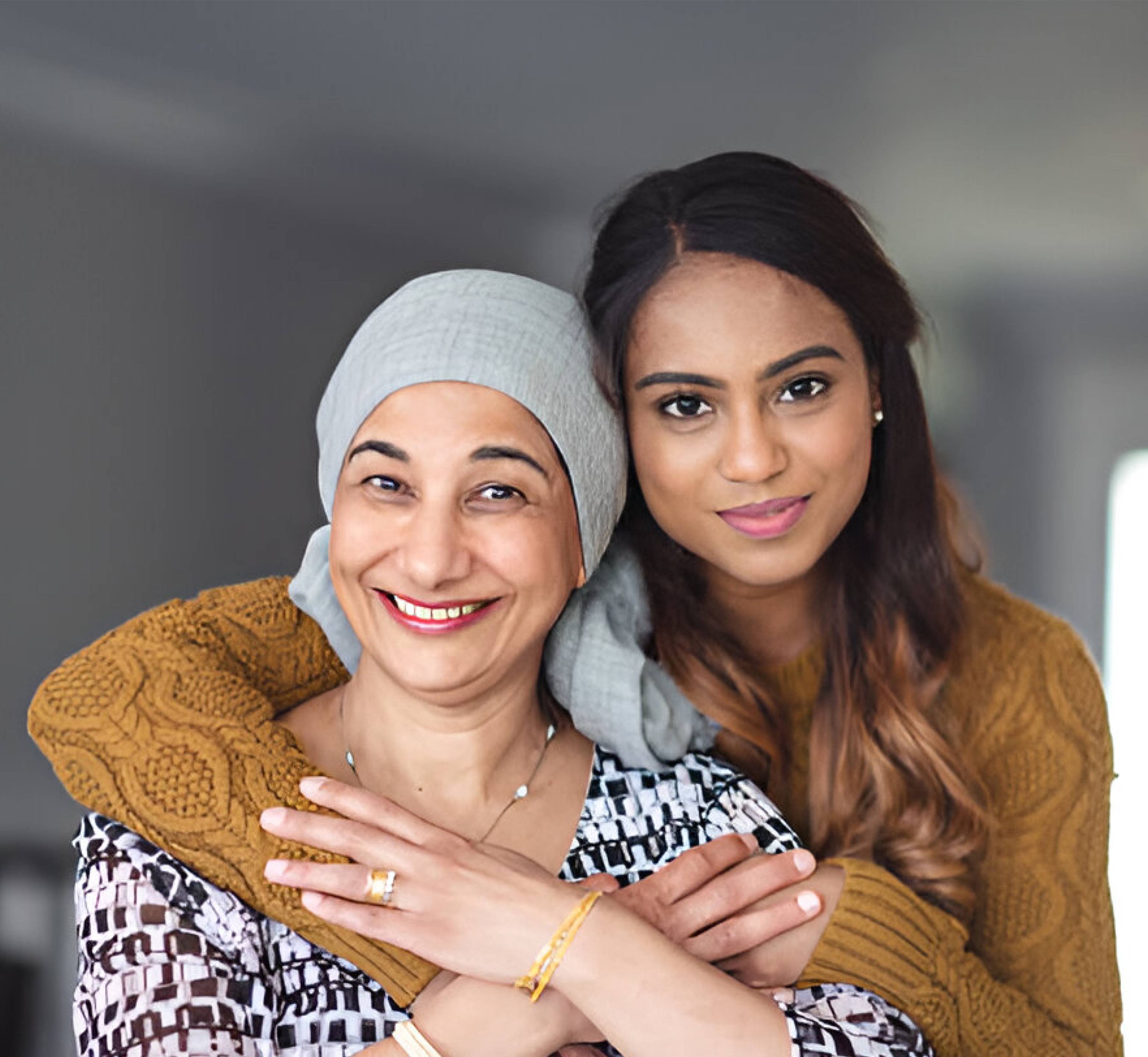 Book Appt.
Book Appt.
 Call Now
Call Now


Lung cancer is caused by uncontrolled cell division in the lungs. Your cells naturally divide and replicate themselves. However, they may experience alterations (mutations) that cause them to continue producing more of themselves when they should not. Damaged cells divide uncontrollably, forming lumps, or tumors, of tissue that eventually prevent your organs from functioning normally. Lung cancer refers to tumors that originate in the lungs, typically in the airways (bronchi or bronchioles) or small air sacs (alveoli). Cancers that begin in other areas and spread to your lungs are typically termed after their origin.
Types of lung cancer
Stages of lung cancer
Each stage has numerous size and spread combinations that can fit into that category. For example, while the underlying tumor in a Stage III cancer may be smaller than in a Stage II cancer, other variables contribute to its advanced stage. Lung cancer is generally staged as follows:
Symptoms
The majority of lung cancer symptoms resemble other, less serious ailments. Many people do not experience symptoms until the disease has progressed, while some experience them early on. Those who have symptoms may just have one or a few of the following:
Causes
Lung cancer is created by cells that continue to divide even when they shouldn't. While cell division is a normal process, all cells contain an internal off switch that prevents them from dividing into new cells (senescence) or causes them to die (apoptosis) when necessary. The off switch is activated when a cell divides or undergoes too many changes (mutations). Cancer cells are normal cells in your body that have acquired mutations that disable the off switch. Cells multiply uncontrollably and interfere with your normal cells. Cancer cells can enter the circulation or lymph nodes and spread throughout the body, causing damage.
Diagnosis
Lung cancer diagnosis might involve several steps. During your first visit to a healthcare provider, they will normally listen to your symptoms, ask about your medical history, and perform a physical exam. Because lung cancer symptoms are similar to those of many other, more prevalent conditions, your doctor may begin by ordering blood tests and a chest X-ray. If your provider suspects you have lung cancer, your next steps in diagnosis will usually include more imaging tests, such as a CT scan, followed by a biopsy. Other tests include a PET/CT scan to assess whether cancer has spread, as well as testing of malignant tissue obtained from a biopsy to help select the best course of treatment.
Tests
Blood tests, imaging, and fluid or tissue biopsies are all tests that your doctor may order or perform.
Blood tests
Blood tests cannot identify cancer on their own, but they can help your doctor assess how well your organs and other body parts are functioning.
Imaging
Chest X-rays and CT scans provide your doctor with images that show changes in your lungs. PET/CT scans are typically performed to analyze a problematic CT scan finding or after a cancer diagnosis to see whether the cancer has spread.
Biopsy
Your provider can do a variety of procedures to get a better look at what's going on inside your chest. During the same procedures, your provider can collect samples of tissue or fluid (biopsy), which can then be examined under a microscope to check for cancer cells and diagnose the kind of cancer. Samples can also be examined for genetic alterations (mutations) that may impact your treatment.
To detect lung cancer or learn more about its spread, procedures such as needle biopsy, bronchoscopy, thoracoscopy or video-assisted thoracic surgery (VATS), thoracentesis, endobronchial ultrasonography or endoscopic esophageal ultrasound, and mediastinoscopy or mediastinotomy are utilized.
Treatment
Treatments for lung cancer aim to eliminate or slow the spread of cancer in your body. Treatments can eliminate malignant cells, help to destroy or prevent them from proliferating, and train your immune system to fight them. Some treatments are also used to alleviate symptoms and pain. Your therapy will be determined by the type of lung cancer you have, its location, the extent of its spread, and a variety of other factors. Treatments for lung cancer include surgery, radiofrequency ablation, radiation therapy, chemotherapy, targeted medication therapy, and immunotherapy.
Prevention
Some strategies to lower your risk are:
Conclusion
Lung cancer is a serious disease, but with early detection and advancements in therapy, survival rates are increasing. Understanding the causes, symptoms, and treatment choices is critical for anyone at risk or impacted by this disorder. If you are concerned about lung cancer or observe any signs, seek medical attention right once. You can lower your risk and improve your long-term health by adopting preventative measures and maintaining a healthy lifestyle.
SHALBY Sanar International Hospitals provides extensive medical procedures backed up with our state-of-the-art technology and a team of highly qualified & experienced clinical experts.

Grade 2 Endometrium Cancer | Ms. Robiyakhon | Uzbekistan | Dr. Archit Pandit | SHALBY Sanar

Male Breast Cancer Recovery Story | Dr. Archit Pandit | Cameroon | SHALBY Sanar

Ms. Nafisa’s Inspiring Breast Cancer Recovery | Dr. Archit Pandit | Uzbekistan | SHALBY Sanar International Hospitals

Stage4 colon cancer is curable - Colon cancer with liver metastasis | Kenya | Dr Archit Pandit

Patient from Kenya Treated by Dr. Archit Pandit | SHALBY Sanar International Hospitals

Double Cancer Victory: Mrs. Salma Kapoor's Inspiring Recovery Story | Dr. Archit Pandit

Patient from Uzbekistan Treated by Dr. Archit Pandit | SHALBY Sanar International Hospitals

Patient from Uzbekistan Treated by Dr. Archit Pandit | SHALBY Sanar International Hospitals

Successful Carcinoma Buccal Mucosa Surgery of a Patient from Nigeria by Dr. Archit Pandit

Successful Colon Cancer Surgery of Mr. Faraidun Kaka Bra Amin Amin's from Iraq | Dr Archit Pandit

Miraculous Recovery of a patient from Uzbekistan battling Ovarian Cancer | Dr. Archit Pandit

Successful Cancer Detection & Surgery by Dr. Archit Pandit | SHALBY SHALBY Sanar International Hospitals

Successful Colon Cancer Treatment of a patient from Iraq by Dr Archit Pandit | Surgical Oncology

Successful Glottis Mass & Carcinoma Vocal Cord Treatment of a patient from Iraq by Dr Archit Pandit

Successful Stage 4 Colon Cancer Treatment of a patient from Kenya by Dr Archit Pandit

Surviving the Odds: 56-Year-Old's Journey with Recurrent Carcinoma Vocal Cord | Dr. Archit Pandit

Surviving Recto-Sigmoid Cancer: Mr. Syamand Ahmed's Inspiring Journey

Success Story: Iraqi Patient's Liver Tumour Treatment at SHALBY Sanar International Hospitals

Cytoreductive Surgery Success: Iraqi Patient's 30cm Ovarian Tumor Removed Safely

Beating Liver Cancer: Mr. Abdirashid's Inspiring Story

Ms. Nejood's Success Over Pancreatic Cancer: A Remarkable Journey

Transforming Smiles: Revolutionary Buccal Commando Procedure

Wide Local Excision Surgery & Microvascular Reconstruction of a Cancer patient

Successful Surgery of Esophgeal Cancer

Successful Lung Cancer Surgery of Ms. Jerioth Wanjiru from Kenya

Para Thyroidectomy on Pt Jawad Kadhim Tweli from Iraq

Dr Archit Pandit discusses the fascinating case of Geeta Rani
Our doctors pen down their research findings and experiences from time to time. Their words provide deep insight into the latest techniques, technologies and other advancements in healthcare. It provides expert answers to all kinds of health questions for real-life issues.
VIEW ALL




Since the day of its foundation, SHALBY Sanar International Hospitals is committed to provide comprehensive healthcare services. It regularly organizes awareness programs in its premises and encourages outdoor healthcare activities and camps with an intent to put focus on preventive healthcare.
VIEW ALL